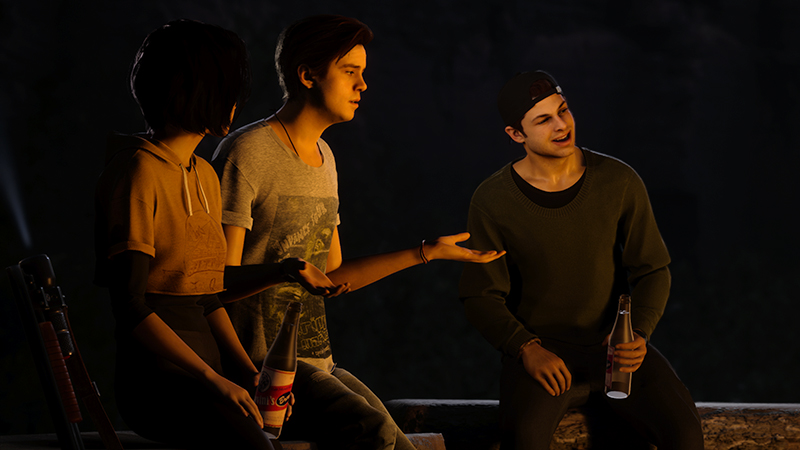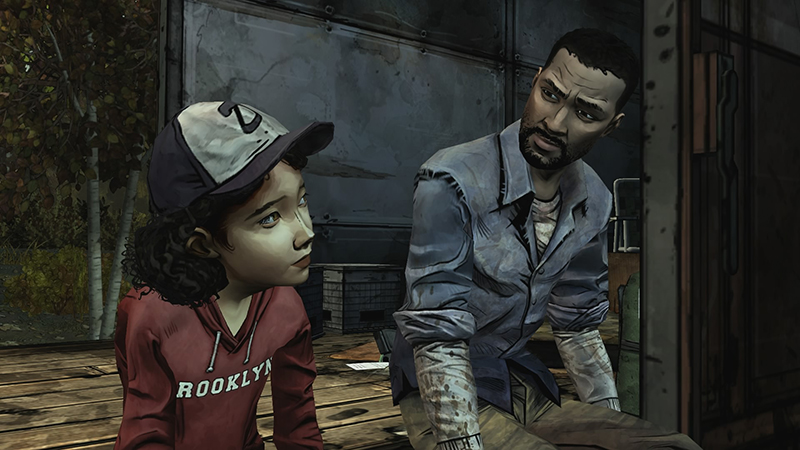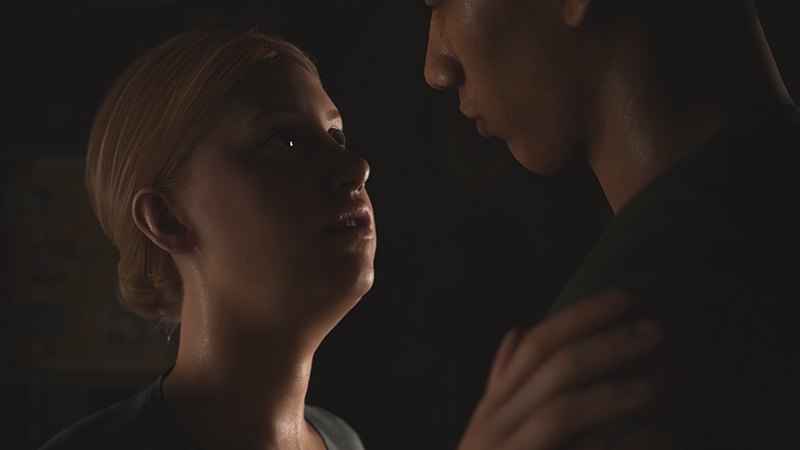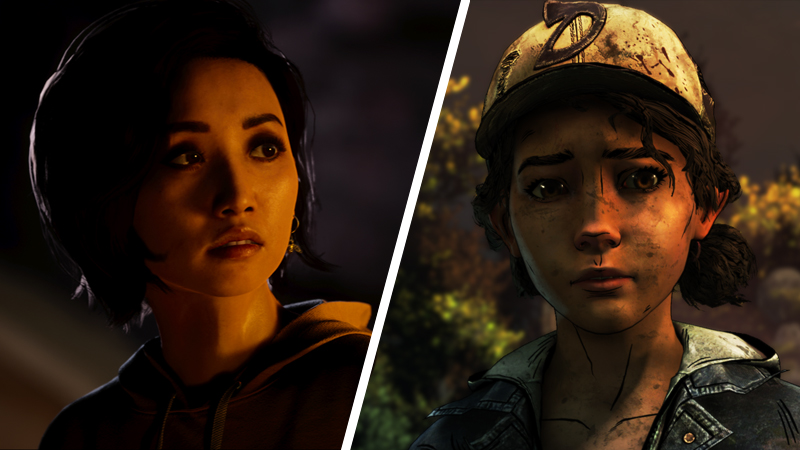Telltale Games’ implosion was sad, but not impossible to see coming. Outside of the inner turmoil that led to its demise, its video games were making less and less impact with each release. Even though some of its best output came after the 2013 breakout success of The Walking Dead, Telltale’s games were hard to get excited about because there were so many of them in a relatively short amount of time. With similar title after similar title, fellow narrative-focused adventure studio Supermassive Games is seemingly headed down that same road.
This slow spiral started almost immediately after Until Dawn. This 2015 title was inventive with its horror and adventure game blend, showing a hybridization of the genre that seemed so obvious in hindsight. It was even more shocking that this clever fusion of a game came from the ashes of a PlayStation Move title for the PlayStation 3 that was destined to underdeliver. Supermassive was a relatively unknown team and it seemed like it had found its niche.
RELATED: The Quarry Review: Stuck in the Uncanny Quarry
However, Until Dawn set a high bar and one the studio didn’t even come close to hitting following its surprising success. After a string of spiritual successors and one nauseating VR spin-off, Supermassive made the closest follow-up with The Quarry. With a larger scope and focus on horror, it was the most direct response to everyone asking for something more like Until Dawn.
However, The Quarry is still one of those narrative-driven horror games and that alone is not as novel anymore. Hidden Agenda was another one of those games, but without the horror angle. Man of Medan was another one of those games. Little Hope was another one of those games (but much worse). House of Ashes was yet another one of those games. And The Devil in Me, which is presumed to come out later in 2022 (although the official site says the date is “non-disclosed”), is probably going to be another one of those games, too.

The Quarry does very little to separate itself from these titles and even though trying to walk in Until Dawn’s general footsteps isn’t an infallible idea, the gaming landscape has changed a lot since 2015. The context is important because 2015 was a time when only Quantic Dream was making big narrative-focused, adventure-esque games like that, a team with games that have only gotten more laughable as time has gone on. Until Dawn was remarkable because it was a horror adventure game with writing that wasn’t mostly written by a delusional auteur and stuck out because of that.
Even though Supermassive helped introduce something new to the genre, it has also beaten that idea into the ground in the ensuing years, hardly innovating along the way. There have been small advancements, like a movable camera and some appreciated accessibility and multiplayer options, but they generally have the same inner workings and outer trappings. Walking around a tiny environment before getting pushed into multiple quick-time event-heavy cutscenes is a foundation that deserves to be expanded on. And failing to do so only means these games don’t get to realize their true potential.

Telltale Games found itself in a similar predicament years prior, as The Walking Dead’s success created a template it never strayed from for the next 11 games (11 and a half counting The Walking Dead‘s final season) it churned out over the next five or so years. Quality was not the issue — many of its best games were sprinkled throughout that period — but it was the onslaught of such similar games in a small amount of time that only made them less exciting. Batman: The Enemy Within and Tales from the Borderlands are two of its standouts, yet they don’t get as much respect because too many were already understandably tired of Telltale’s formulaic games that increasingly deprioritized interactivity and were still full of persistent technical problems.
RELATED: Will Poulter Reflects on Doing Motion Capture for 3 Characters in Little Hope
This order to create games from a template reportedly came from the top. A damning report from The Verge in March 2018 found that Telltale Co-Founder and CEO Kevin Bruner often shot down innovative ideas that were in their embryonic stages, failing to see their potential. The Walking Dead was also so much of a success that the developer handcuffed itself to that template in order to recapture that spark in later years, a misguided goal that missed what truly made the surprise post-apocalyptic adventure game special. The article also reported that many left the company because of its unwillingness to innovate.
By the time Telltale tried to innovate, it was too late. The Walking Dead‘s final season was a little more traditionally interactive, but Telltale folded during its development, meaning Skybound Games had to pick up the pieces. Although this was only a preview of what was to come, as Cultist Simulator Designer Alexis Kennedy told VG24/7 that Telltale approached him to work on a non-Walking Dead zombie game that told a story that “allowed room for stuff that emerged naturally from procedural generation.” And according to another report by The Verge, its Stranger Things game was supposed to “explore new types of design and storytelling” and had “a really ambitious vision for building a new type of Telltale game.” This “free-roam, mini-open world” was canned, as was the unnamed zombie game.

While some of the nuances differ — Telltale released more games and also had stronger writing almost across the board — Supermassive Games is seemingly following a similar path with its deluge of games that are using the same exact foundation. Its titles were once new and fresh and are now becoming more and more played out as they are released, which has culminated in The Quarry, a game that should have been a surefire hit, but wasn’t. What was once fresh, like its choice-based gameplay and omniscient character that talks to the player, became stale and what was always bad or needed improvement— its occasionally stilted animation, wonky faces, lack of interactivity, unclear or superficial choices, jarring load screens, and unhelpful collectibles — was never fixed and only got more annoying. Some of those aspects even got worse over time, which is inevitable when a studio whips up a new game almost every year.
Even if there thankfully haven’t been any reports of Supermassive crumbling from the inside (it seems to only be expanding), it’s hard to know how much longer this will go on. The Dark Pictures games haven’t been reviewed as well, garnering average scores of 71, 73, and 73, respectively. Only Man of Medan managed to claim a place on the monthly NPD, coming in at the 19th spot in a month that marked a 20-year low for August sales. The other two failed to chart in either launch of their months and none of them cracked the list in their second month. The Quarry seems positioned to have a stronger performance since it is reviewing slightly better, and is a larger title with a bigger publisher, but it’s possible that players will have their fill here and not turn out for the next game.
The upcoming The Devil in Me is that next game and unlikely to buck this trend, as Supermassive has been pumping them out too quickly to make large enough changes to a title that’s likely almost done. But it does mark the end of the first season of The Dark Pictures Anthology, a delineation that gives the team the opportunity to do something new and, optimistically, the time to innovate or dramatically step up its polish and writing chops. Adding more direct control, stronger gameplay segments, more intuitive choices, and just breaking from its blueprint would be the necessary ambitious steps that would show that Supermassive wants to do more than just repeat itself for its sophomore season.
Telltale has already shown what happens when a narrative-focused team spreads itself thin and floods the market in such a short period of time with games that have been formed by the same mold. If it truly wants to sustain itself, Supermassive should pump the brakes and fully realize the next batch of Dark Pictures titles, a number of which have already been trademarked, and develop more creative horror adventure games. Supermassive often gives players a choice in how they survive, so hopefully the developer itself can go down the right path and not only live until dawn but well past it.










